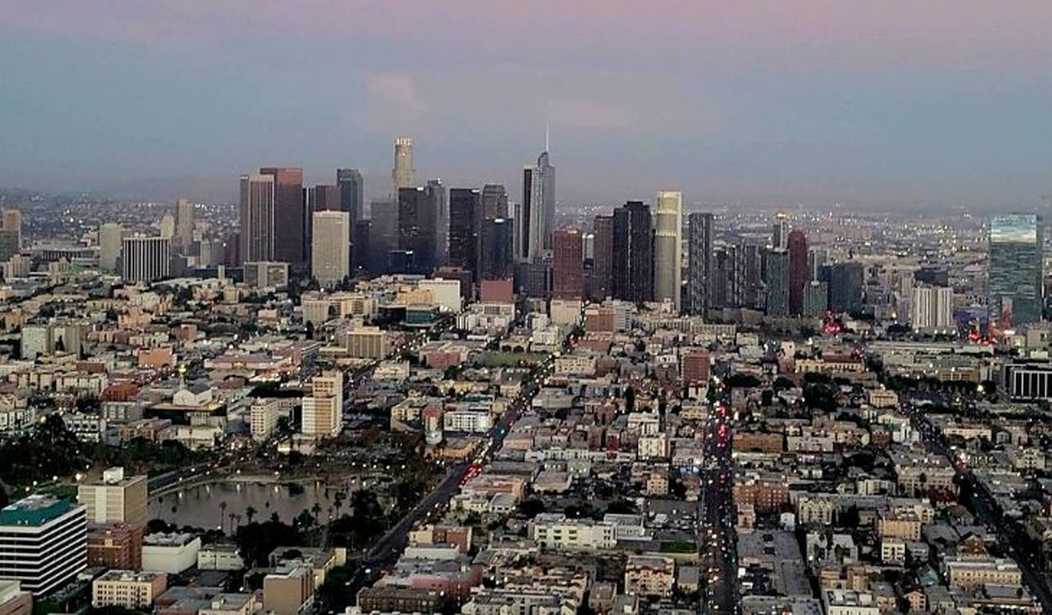
In California This Weekend, We Saw, Again, How Easy It Is to Panic Americans
I am writing this column on a beautiful sunny day in Southern California. It is a Monday in mid-August, so it is not a national holiday, yet in Los Angeles County, where I live, all the schools and all government offices are closed.
Why?
Because, for the past week, the National Weather Service, state and local authorities, and national and local media have been ceaselessly warning that a tropical storm would hit Southern California on Sunday night and Monday with a "life-threatening" intensity not seen since the last tropical storm hit California in 1939, 84 years ago.
On Saturday, CNN reported, "California Gov. Gavin Newsom on Saturday proclaimed a state of emergency Saturday for a large portion of Southern California, as the state prepares for a historic hurricane expected to cause extreme rain and flooding."
Time magazine headlined, "Tropical Storm Hilary Could Cause Life Threatening Flooding."
The National Weather Service warned that residents in the Southwest are bracing for "catastrophic and life-threatening flooding ... with the harshest impacts expected on Sunday into Monday."
On Sunday, The Los Angeles Times headlined, "L.A. Unified closes schools Monday to ensure campuses are safe after Hilary."
And Sunday afternoon and evening, every cellphone received this message about every two hours:
"!Emergency alert: Severe
"National Weather Service: A FLASH FLOOD WARNING in effect for this area until 3:00 am PDT.
"This is a dangerous and life-threatening situation. Do not attempt to travel unless you are fleeing an area subject to flooding or under an evacuation order."
Sunday night, when the worst of the "life-threatening" storm was supposed to hit, my wife and I drove across Los Angeles from near Pasadena to Simi Valley and back, a two-hour round trip. The last time I saw so few cars on a Los Angeles freeway was in the first weeks of the COVID-19 lockdown in 2020. Apparently, many people were just as spooked as they were in 2020.
But this time, they had much less of an excuse to panic. Unlike the invisible COVID-19 virus, the reason for panic this time was completely visible. All these people needed to do was walk outside of their home or hotel -- or just look out the window. Had they done so, they would have seen that steady but moderate rain was falling. Just rain. No high winds, no downpour, no storm, not even thunder or lightning.
The reason my wife and I drove to Simi Valley on Sunday night was to attend a friend's wedding. How much people panicked was made sadly evident there. During the meal, the groom mentioned to me that 40 expected guests had cancelled at the last moment.
I was stunned, and to be honest, angry -- maybe even angrier than the groom, who, at least on the outside, good-naturedly shrugged it off.
There is no more important event in people's lives than their wedding. Yet 40 people, about one in every four guests, didn't show up to a wedding they had committed to attend.
And for no good reason.
No schools open, no government offices open, dire emergency warnings -- all about almost nothing, certainly in Los Angeles County.
Apparently, many Americans learned nothing from the 2020-2021 lockdowns. All the lockdowns did, as Sweden, without lockdowns or closed schools (for students under the age of 17), proved, was inflict terrible damage on the nation's economy, the world's economy, and the education and psyches of vast numbers of young people, and lead to the loss of a vast number of middle-class businesses.
It also seems clear that many Americans continue to trust their well-being to "experts" and to the government. Apparently, it is impossible for the government to cry "wolf" too often.
The sheeplike behavior of many Americans is something entirely new in our nation's history. A people that thought of its country as "The Land of the Free and the Home of the Brave" no longer does.
The government knows this.
As we may learn again this fall.
In California This Weekend, We Saw, Again, How Easy It Is to Panic Americans (townhall.com)


